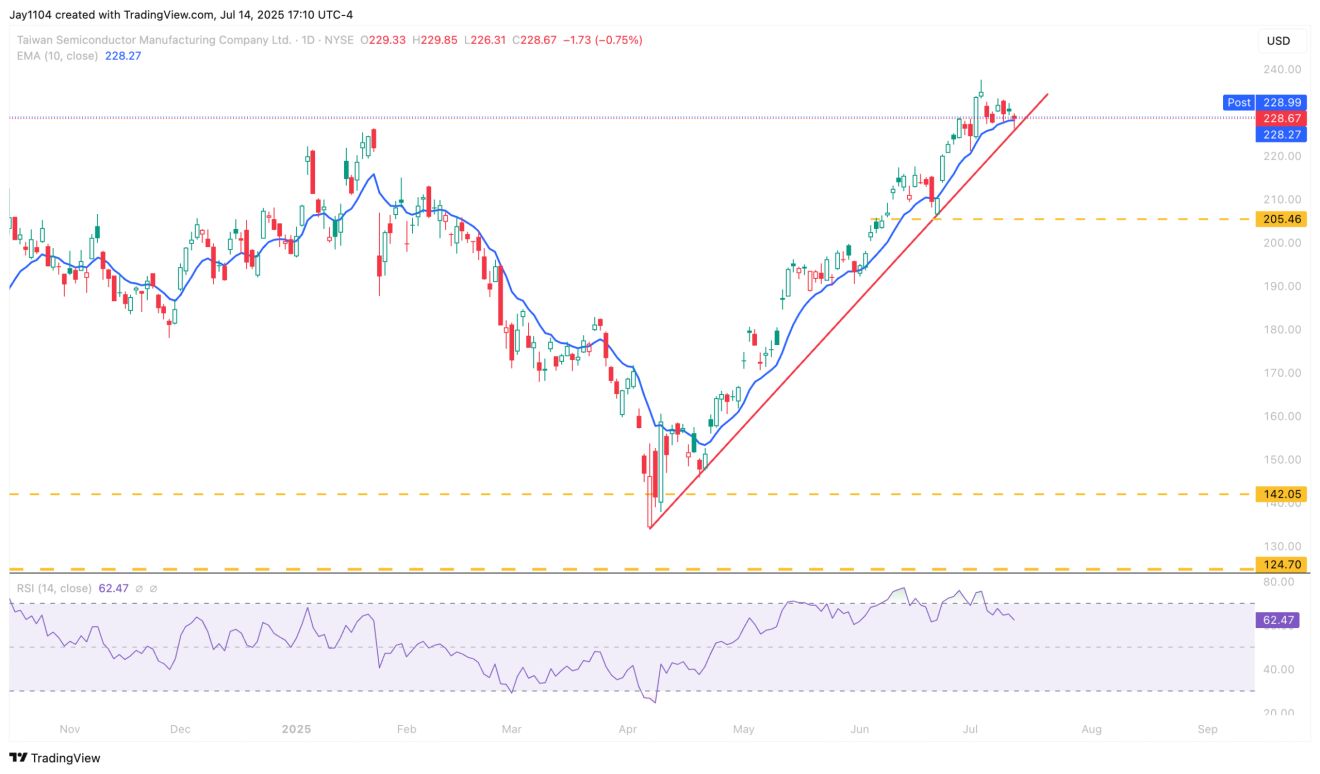Gold prices hover near 6-week high amid softer dollar, Fed rate cut bets
It’s not often that you get a clean sweep of bullishness across the board. Stocks, rates, the dollar, implied volatility, implied correlations, VVIX, and CDX high-yield credit spreads all traded higher on the day. Even CPI swaps finished higher. The only issue, of course, is that when all of these indicators rise simultaneously, it typically isn’t associated—in my experience—with rising stock prices; one would expect stocks to decline.
But this is what happens in a market where it took nearly the entire trading session for the S&P 500 e-mini futures to match the trading volume from 3 July—a half-day session.
As of 4:00 PM ET, only 864k contracts had traded, compared to 751k on 3 July. Declining volume, combined with an RSI that’s now slipping from overbought territory, suggests to me that buyers are running out of momentum to push this market higher. When volume eventually returns—as it always does—prices will likely see a correction.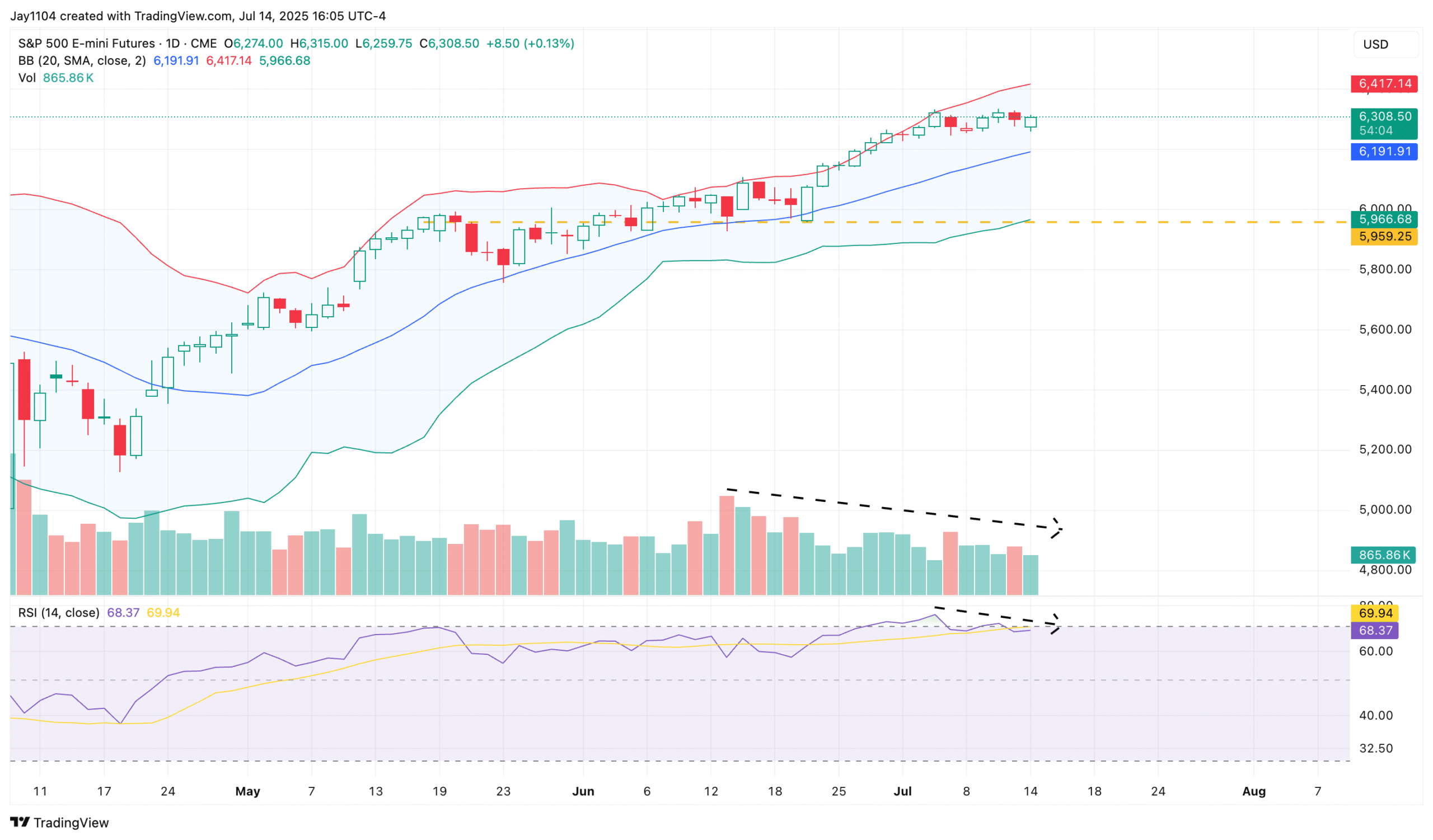
Typically, when implied volatility begins to rise—as it did yesterday—alongside an increase in implied correlation, stocks tend to decline.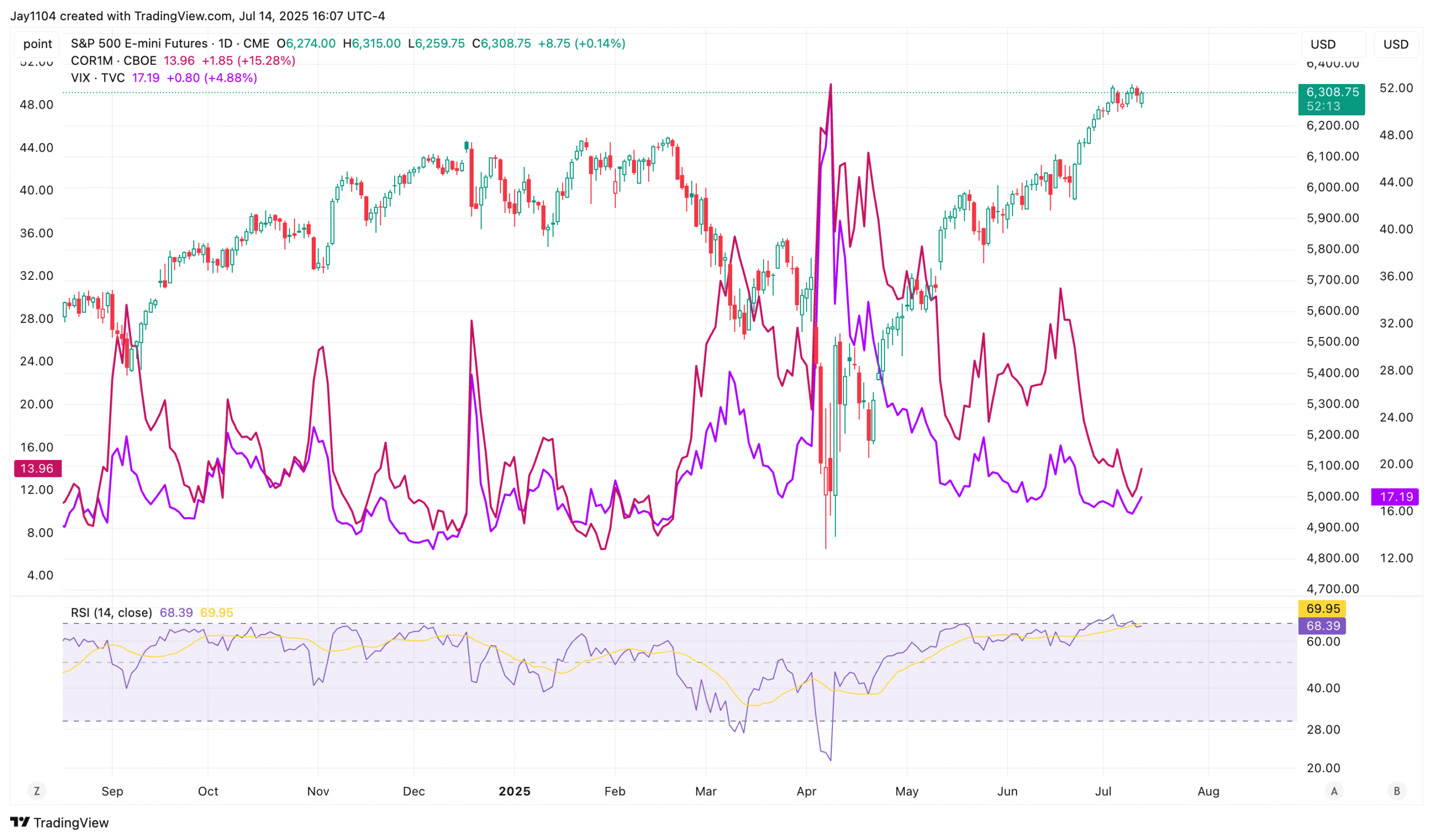
When CDX high-yield credit spreads start to widen—as they did on Monday—stocks typically decline.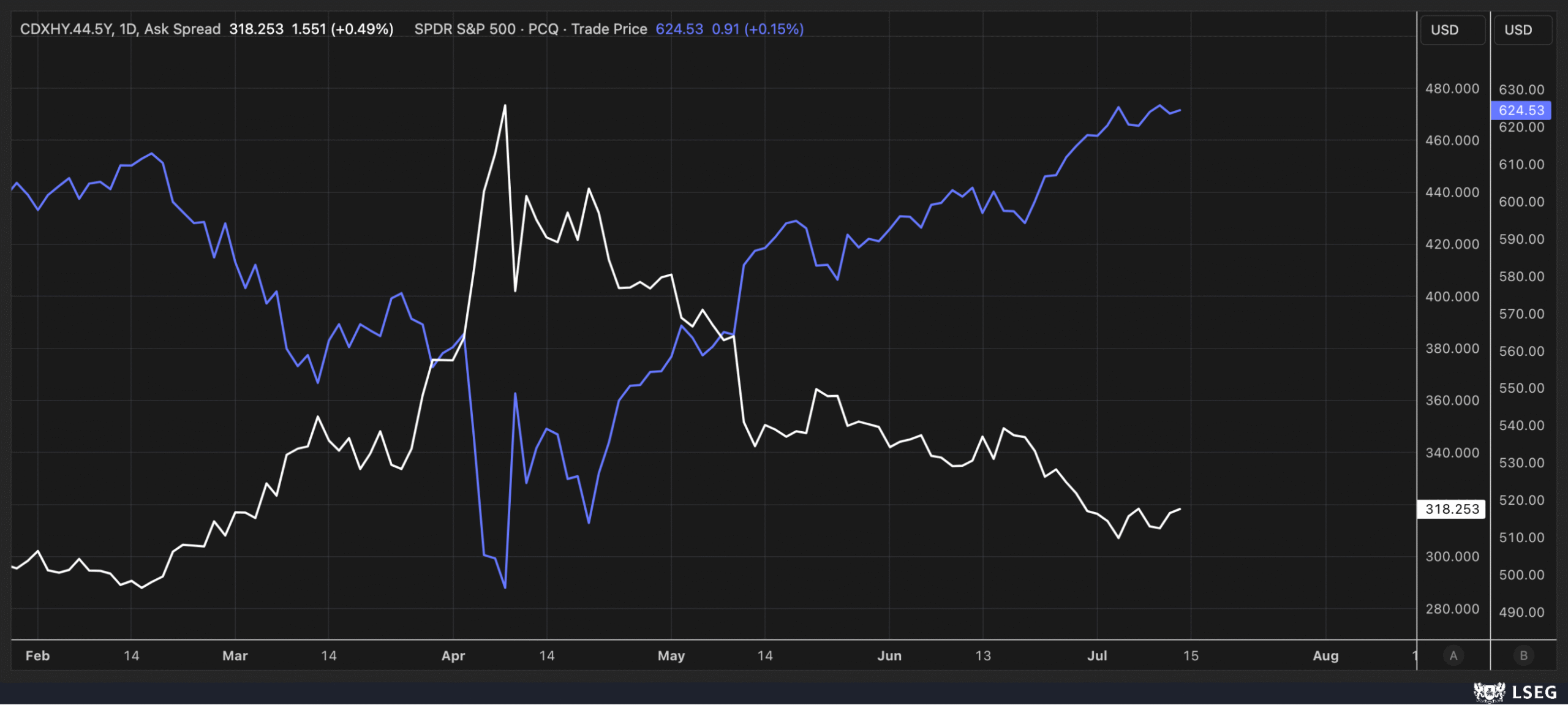
It’s an interesting dynamic: very low volumes in the futures market, combined with some unusual trading patterns across asset classes. It’s hard to say precisely, but I don’t think this current trend is likely to persist. Either stocks will need to start falling, or spreads, volatility, and implied correlations will need to begin declining.
Seasonally, it makes sense not only for implied correlations to stop falling but also to start rising again as we move through earnings season. Given this backdrop, I find it difficult to believe that implied correlations will continue declining from here.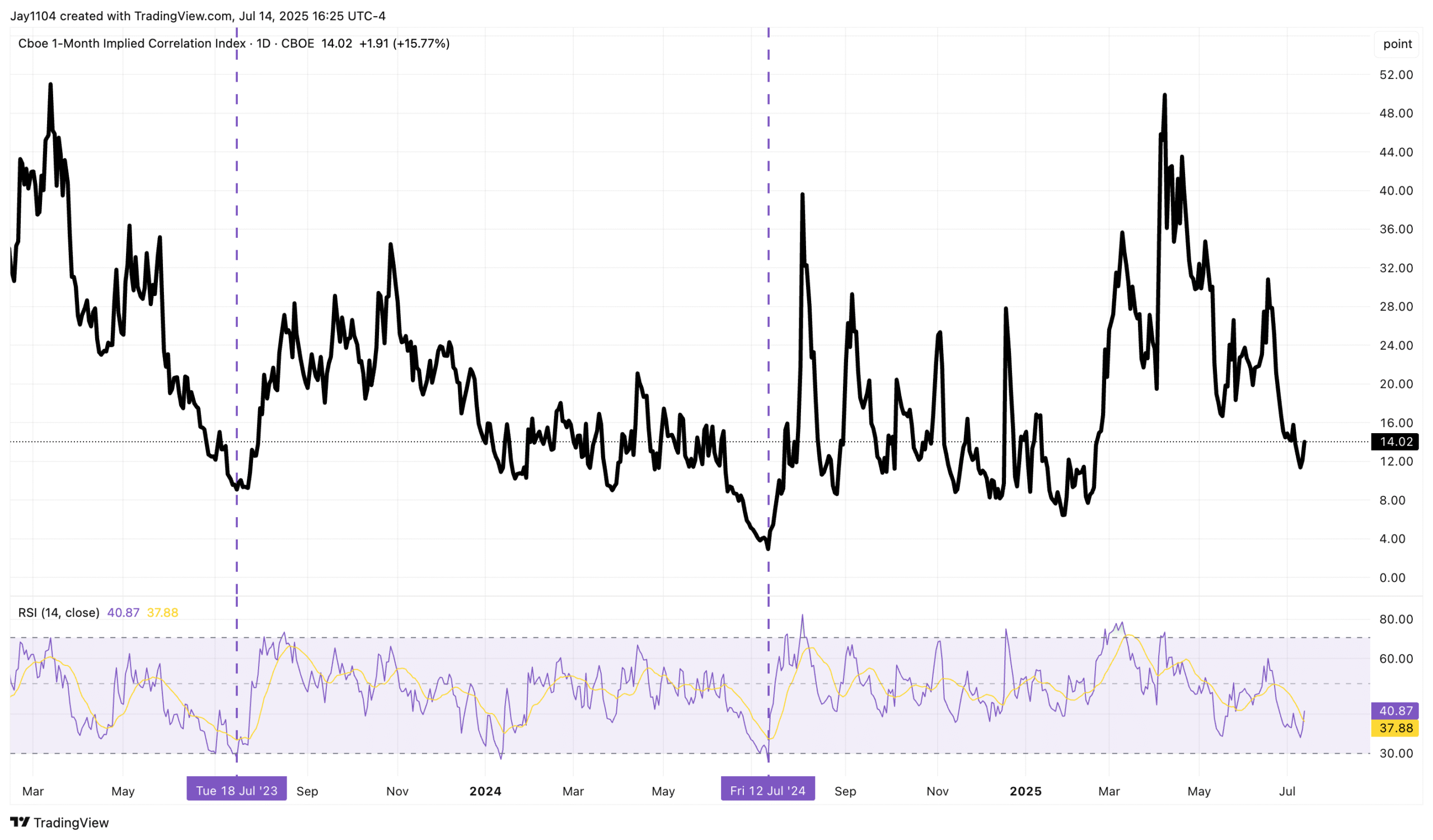
I also find it difficult to believe that the VIX has much further to fall, given that both 10-day and 21-day realized volatility appear to have bottomed out, and 3-month realized volatility probably isn’t far behind.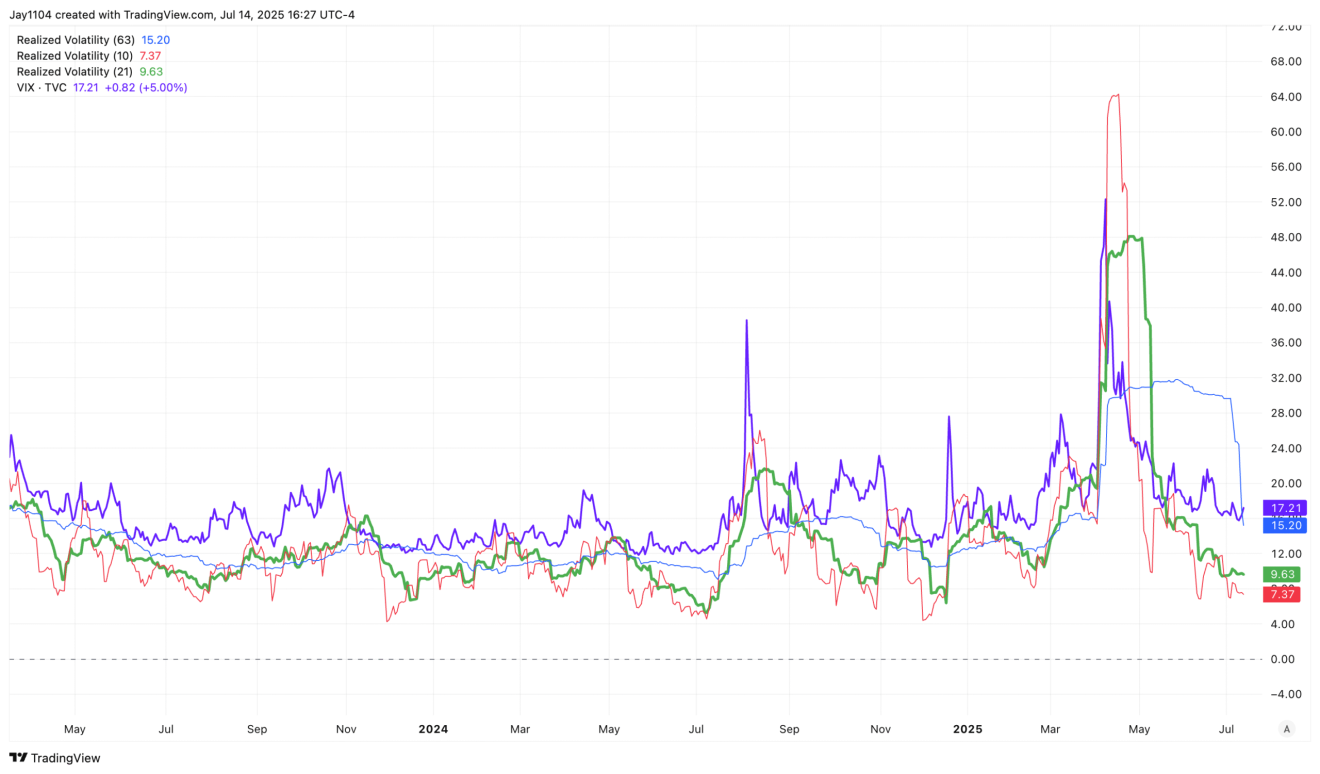
What is also clear is that the 5-year CPI swap is on the verge of breaking out from a trading range lasting more than two years. I think a move above 2.6% could be meaningful and noteworthy. Then again, we’ve seen it reach these levels before, only to pull back.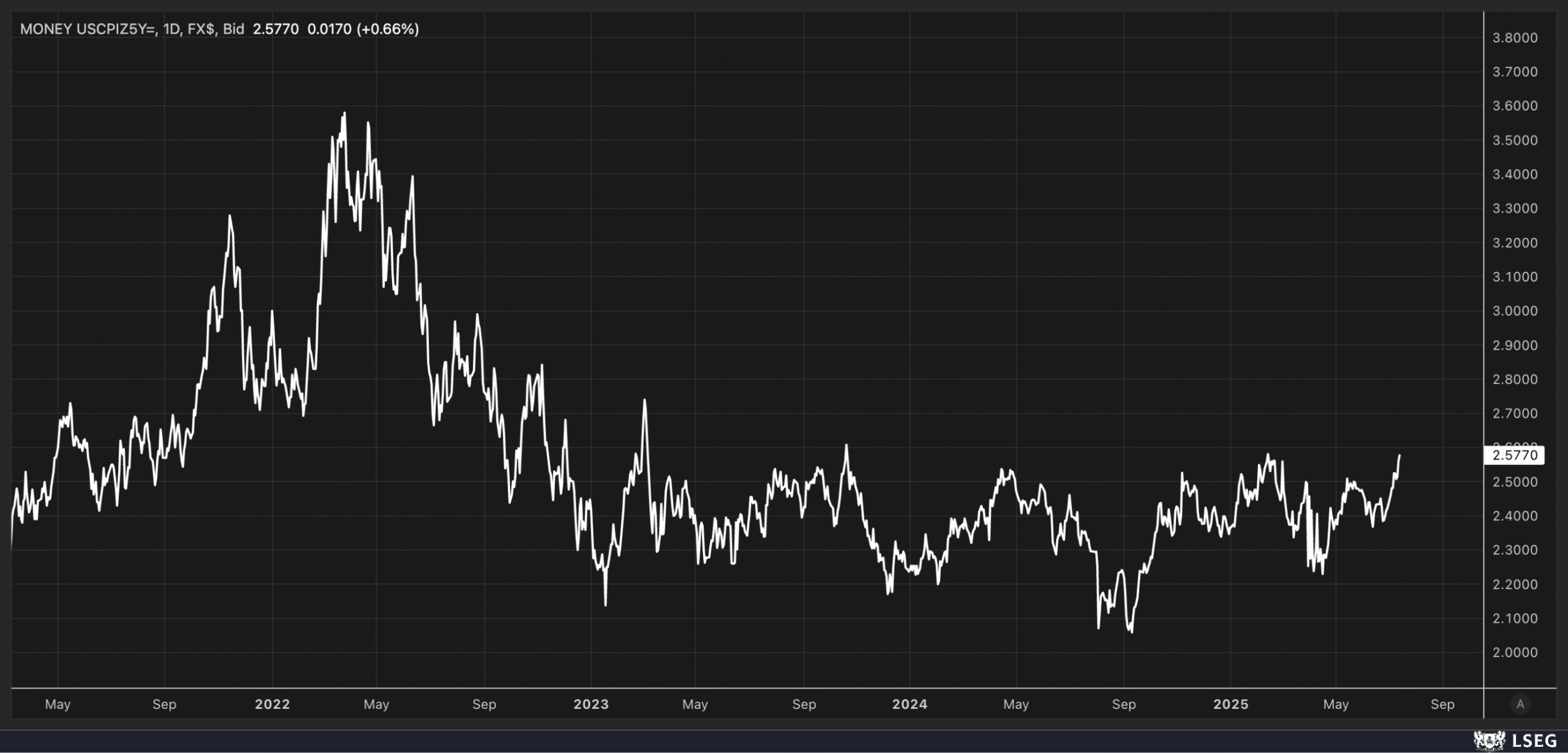
The dollar appears to have broken above its downtrend, and looks quite bullish at this stage.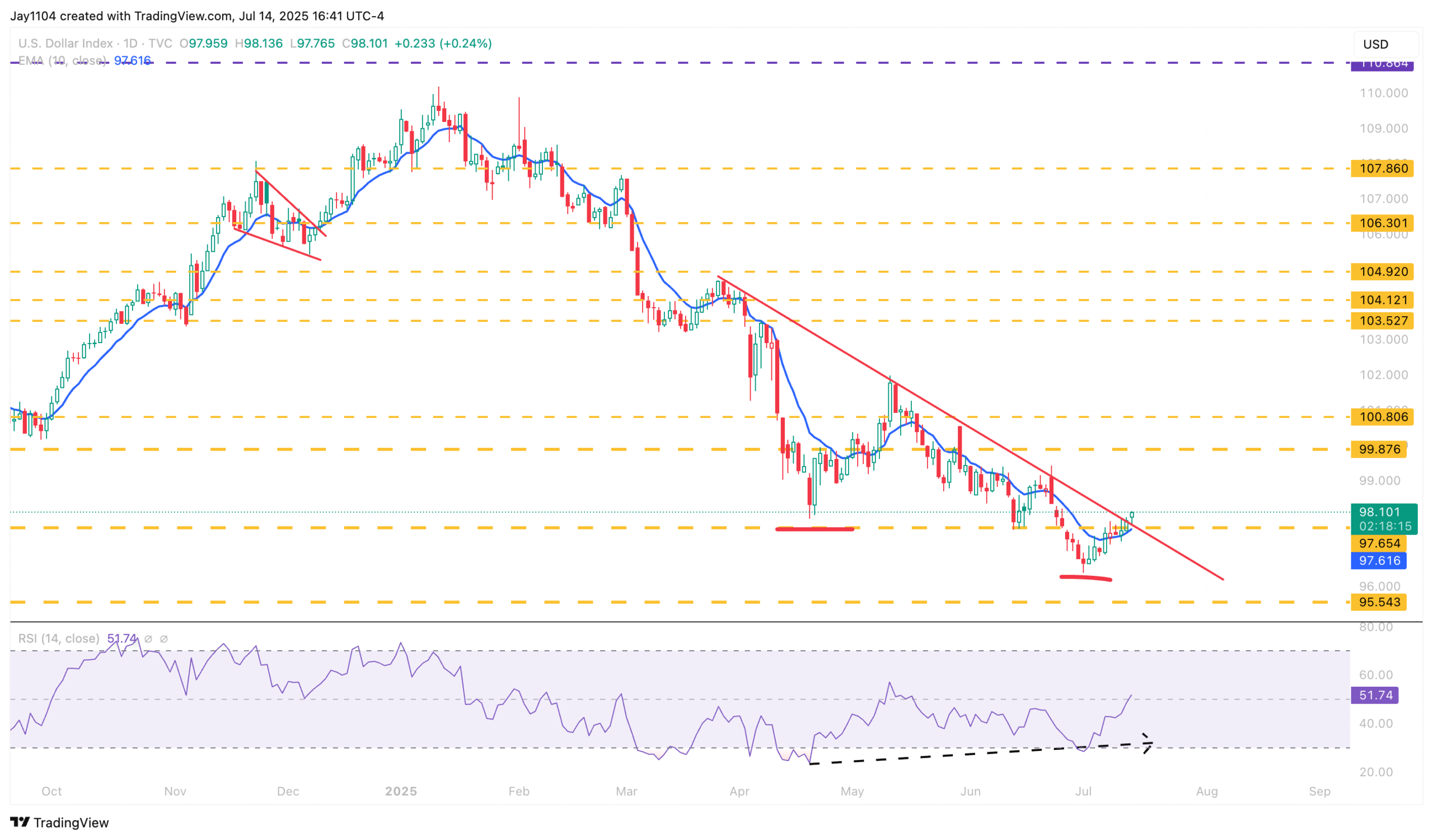
Taiwan Semiconductor Manufacturing (NYSE:TSM) reports results on Thursday, and it will be interesting to see not only their earnings, but also their commentary regarding the impacts of tariffs and, more importantly, the recent weakening of the US dollar. A weaker US dollar has led to a strengthening Taiwan dollar, which could negatively impact TSM’s earnings since the company reports its results in Taiwan dollars.
This currency effect is already visible when comparing TSM’s local shares—which haven’t reached new highs—to its US-listed ADRs, which have. This difference primarily reflects the weaker US dollar.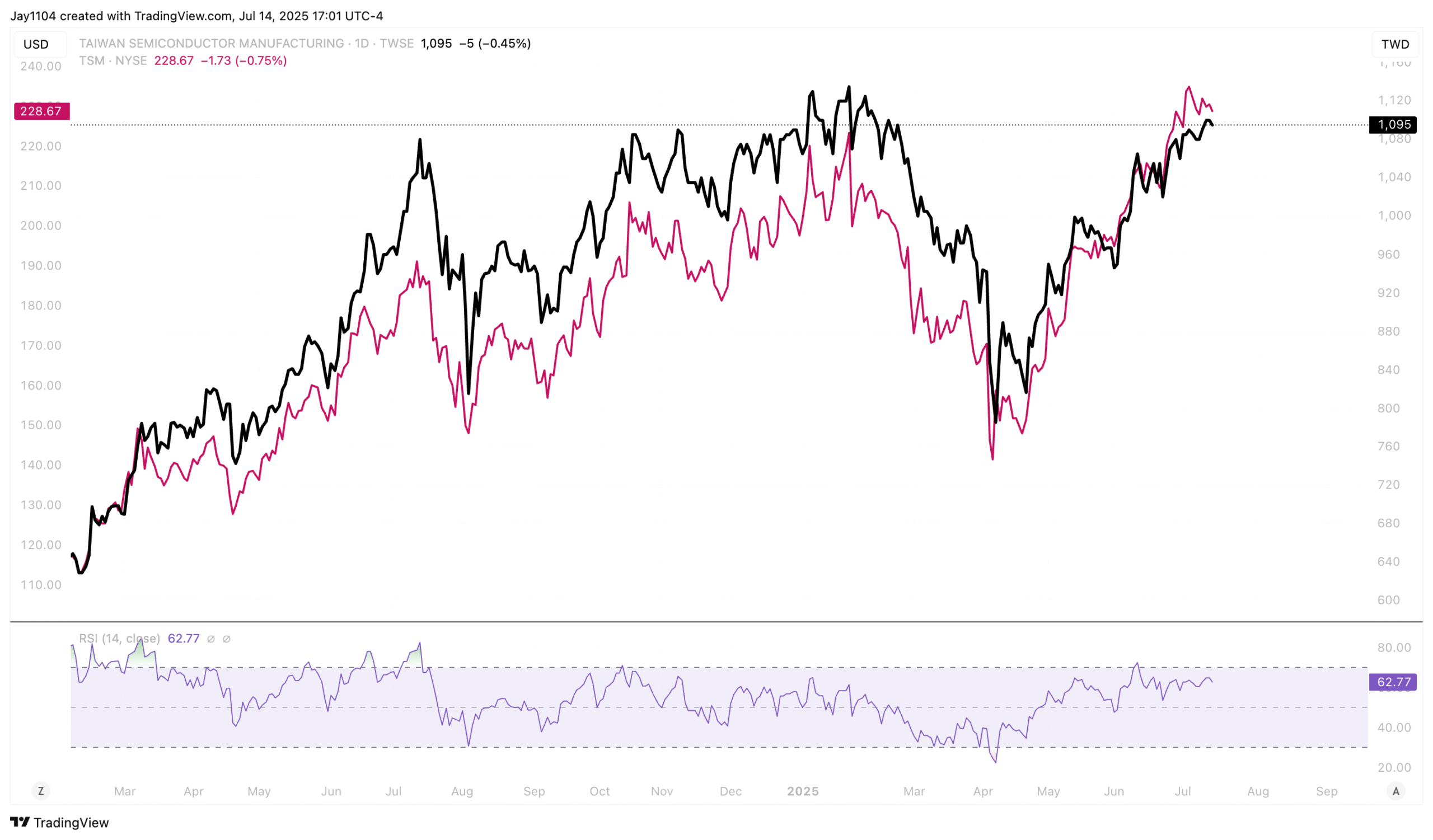
Implied volatility for TSM isn’t excessively high—currently around 60% for the July 18 options expiration—but it might still be high enough that, following the earnings report, the delta on the $220 calls declines significantly. This decline could force the unwinding of hedges, potentially driving the shares lower.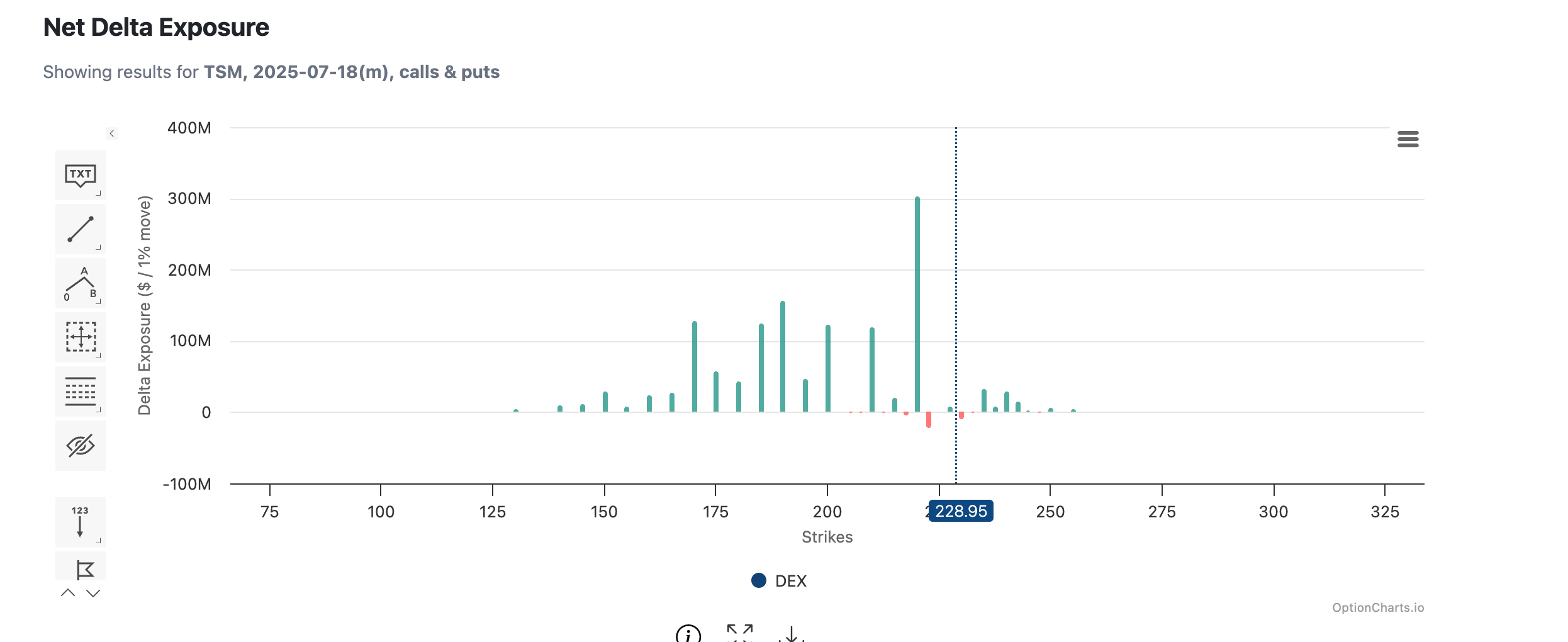
Technically, TSM is currently sitting right on its trend line and the 10-day exponential moving average. Unless the stock can quickly surpass the July 3 high, it’s likely positioned for a pullback toward $205 or possibly lower.